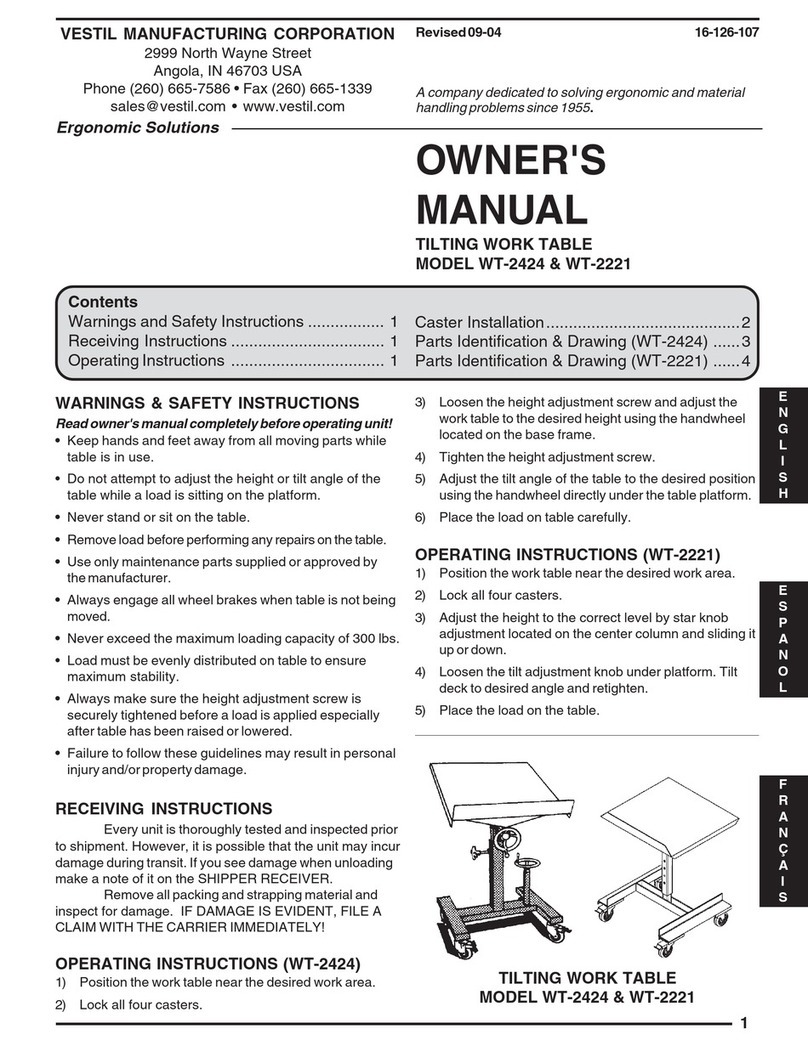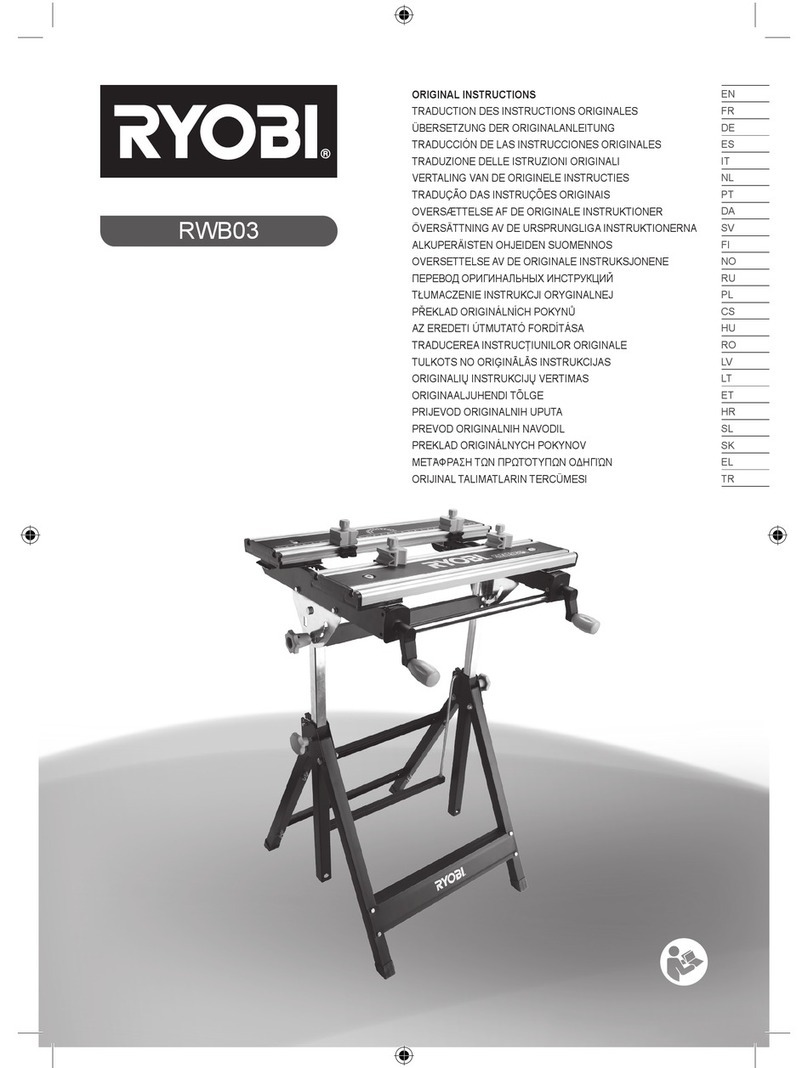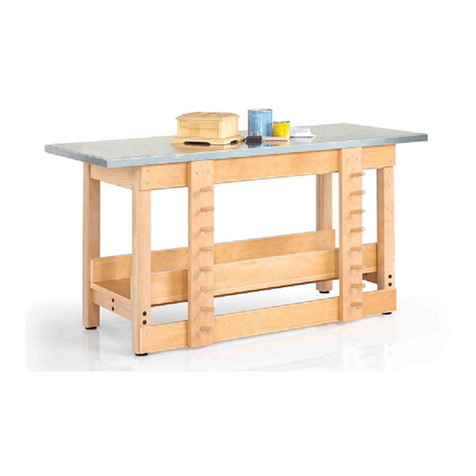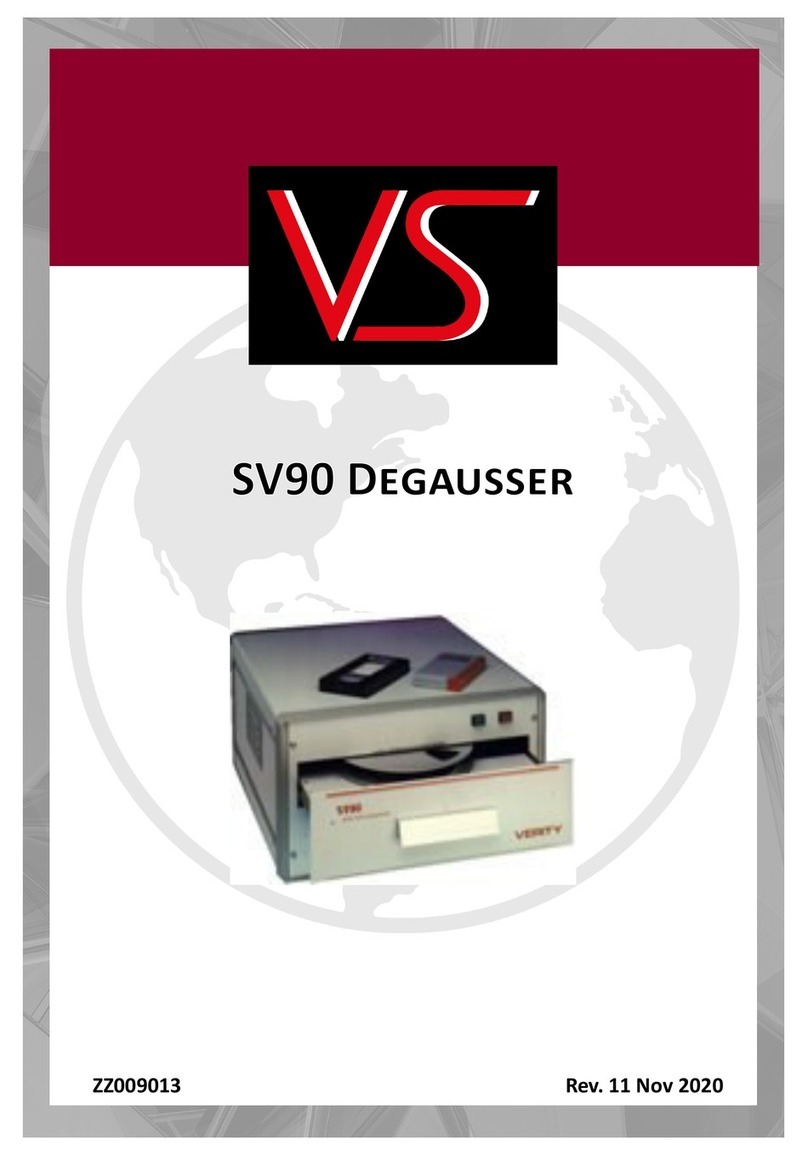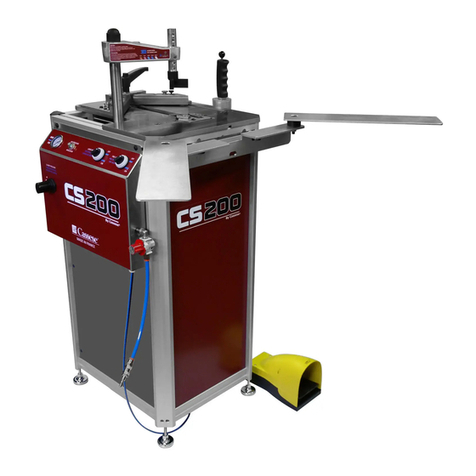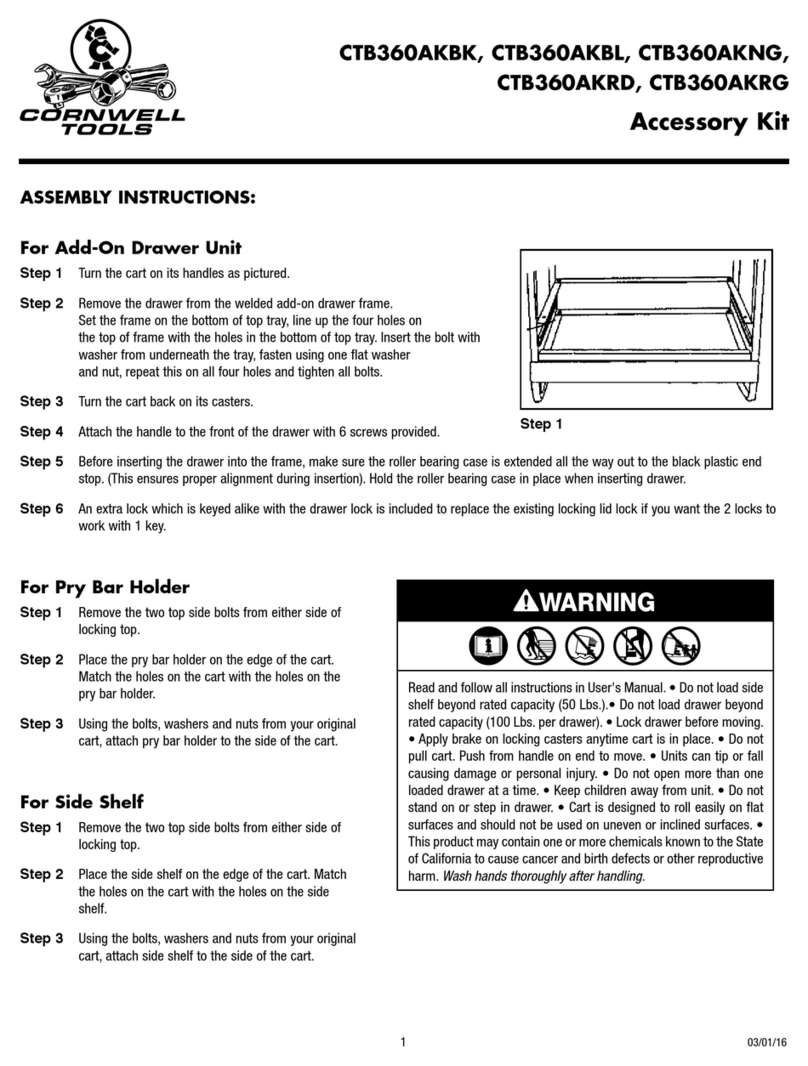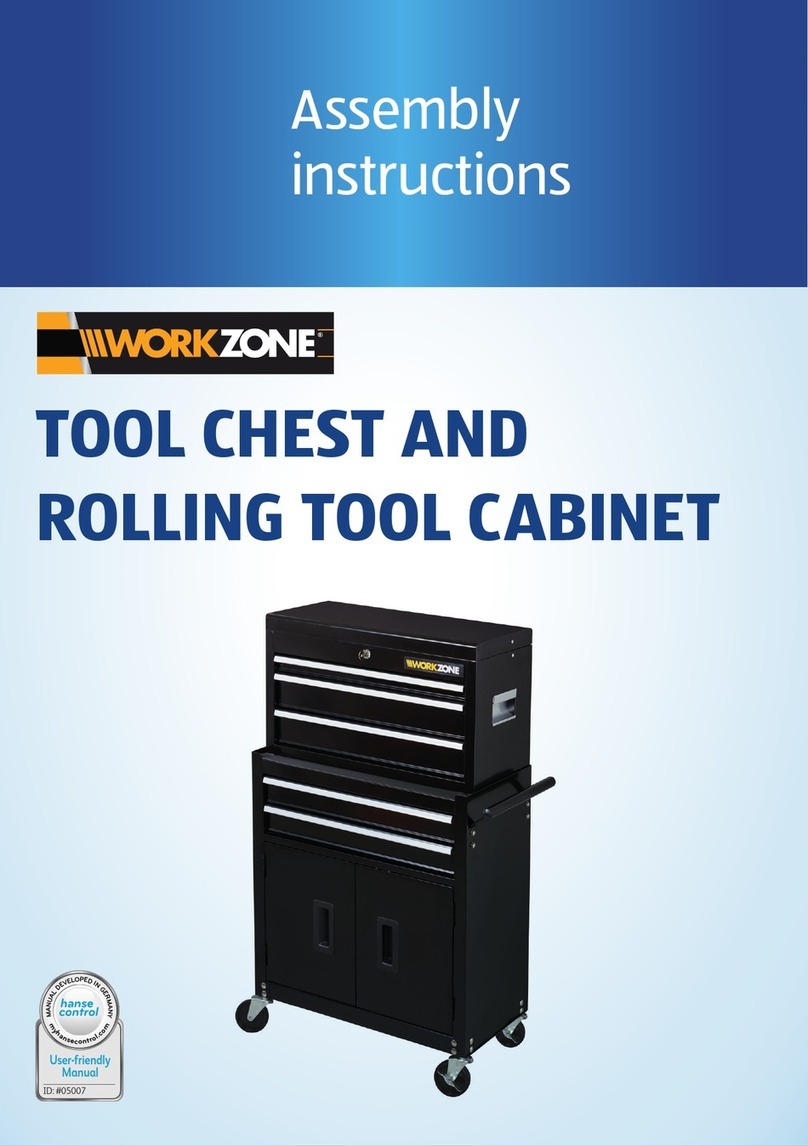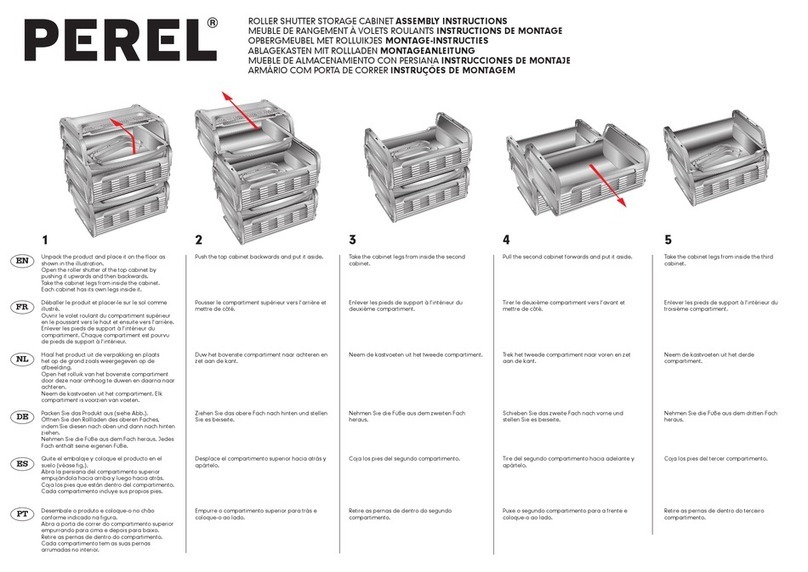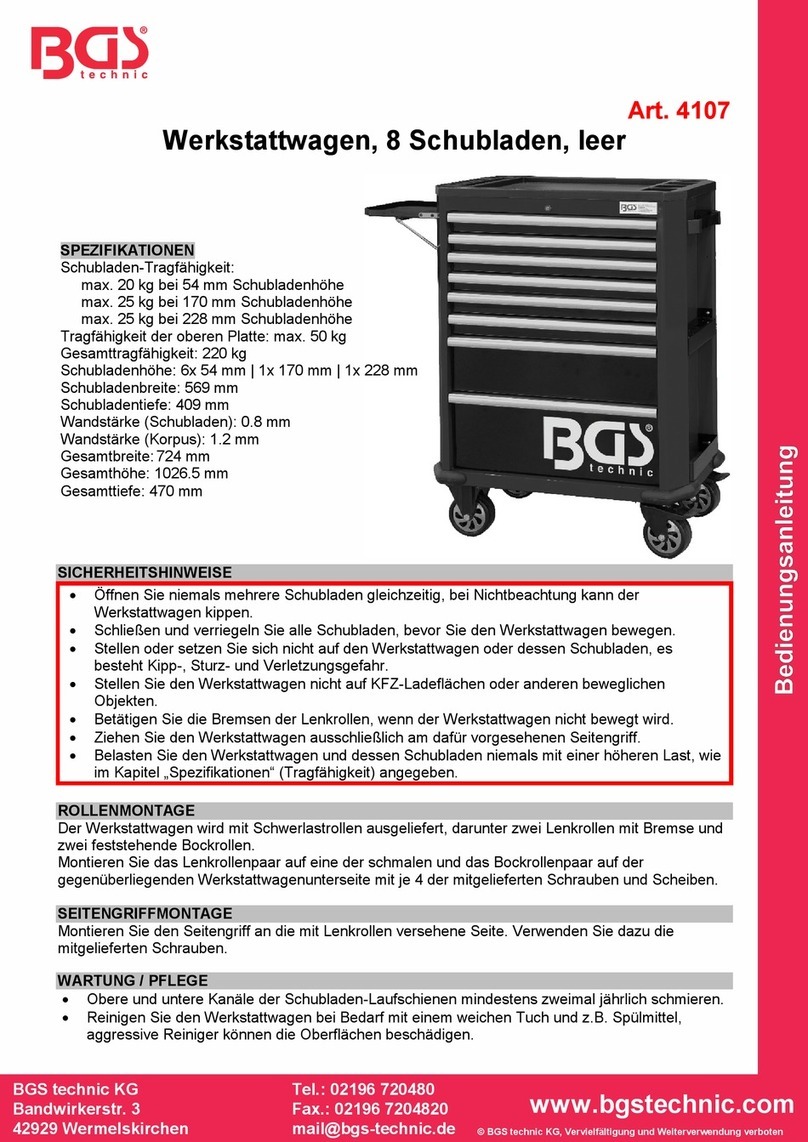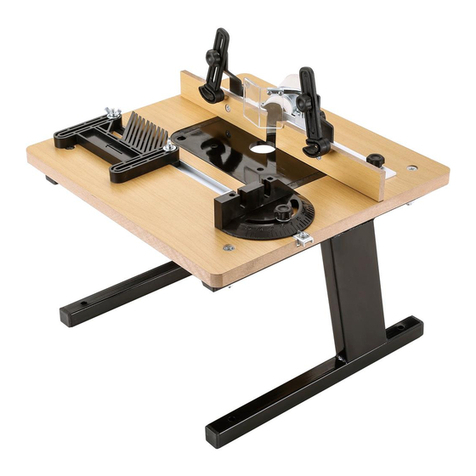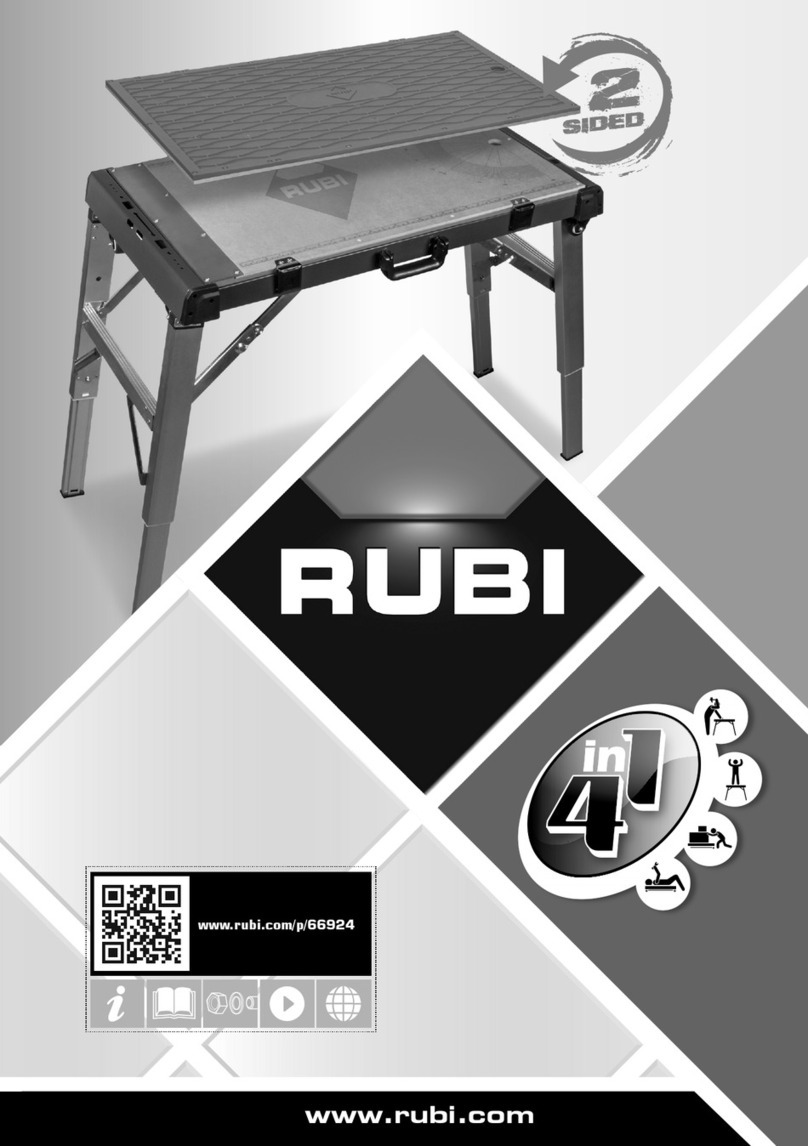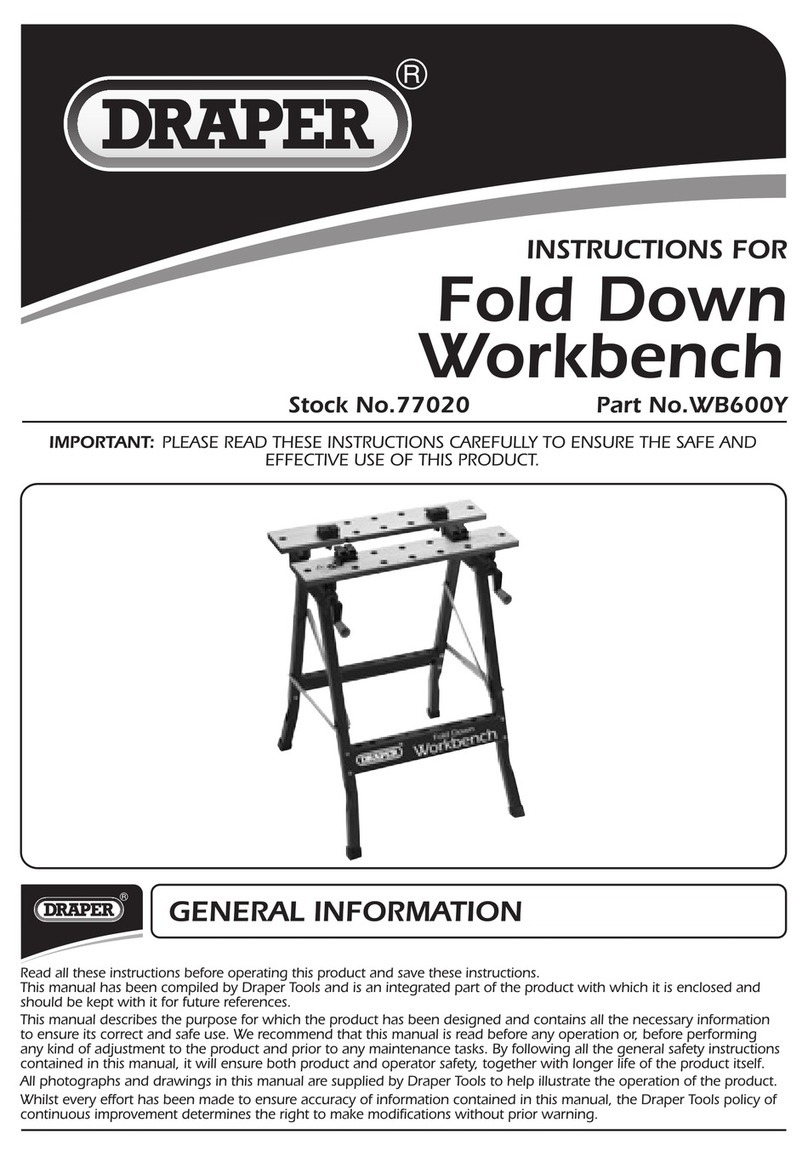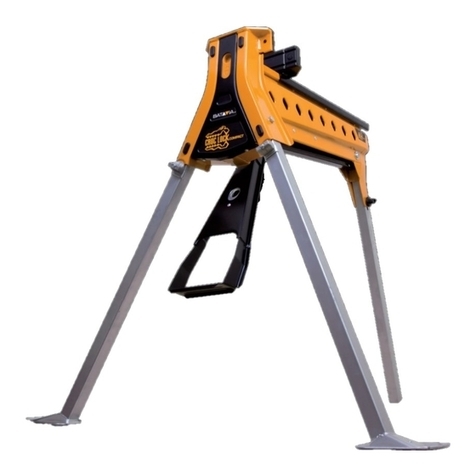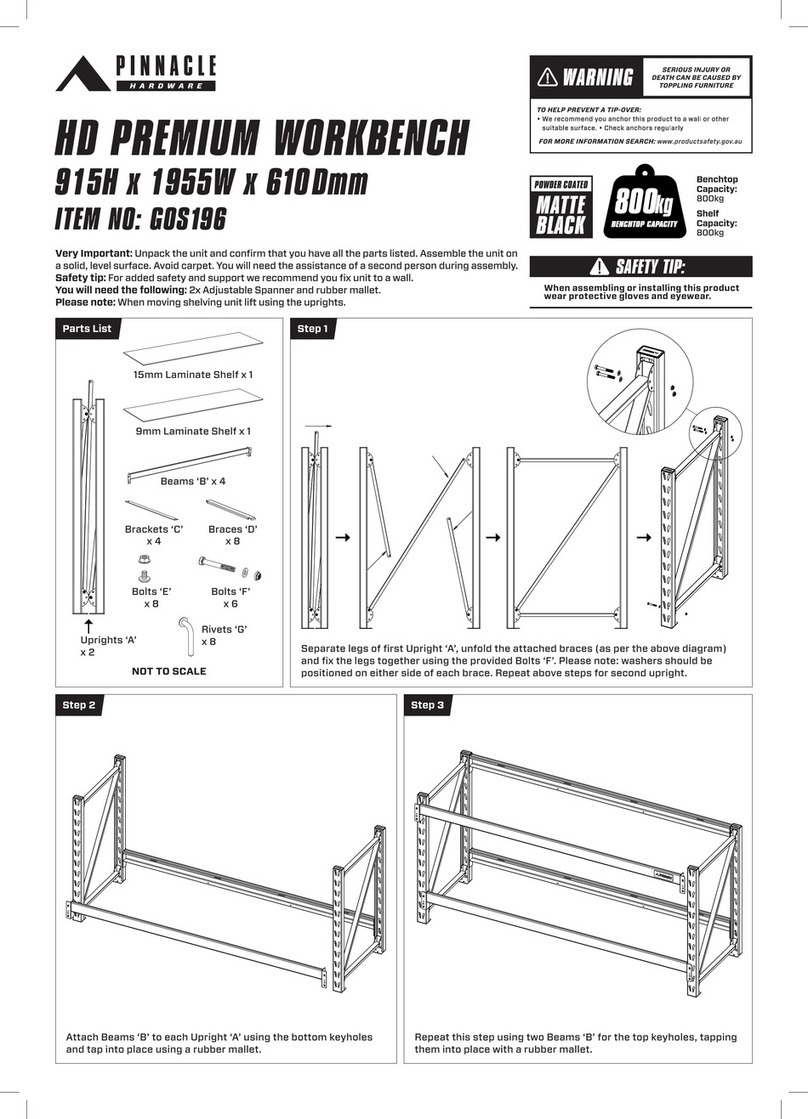3
2 3
5
4
(5)
(5)
(22)
(26)
(21) (21)
(13)
(7)
(5)
(8)
(12)
(13)
(13) (20)
(11)
(7)
(6)
(4)
(5)
(8)
(9)
(10)
Schlaufe führen. Haken am Rundrohr (20) einclipsen und
Kabel mit der Zugentlastung (8) fixieren. Der Freilauf der
Kabelkette ist sicherzustellen!
Kabelführungsschlitten und Steigkanal
einbauen.
[Position des Steigkanals rechts - Bild 5 + Bild 2] Über-
längen der Kabel von unten in Kabelwanne ablegen. Schlitten
von unten zwischen Kabelwanne und Zarge nach oben führen
und über die Kabelwanne einhängen. Den Schlitten nach
rechts bis zum seitlichen Anschlag am Tischbein schieben.
Mit Rändelschraube (6) Schlitten am Kabelkanal verschrau-
ben. Kabel in die zwei Kabelclipse (26) am Steigkanal einfä-
deln. Steigkanal mit Haken (21) unten in Kufe einhaken und
oben mit der Kunststoffklammer (22) an die Säule clipsen.
Ende der Kabelkette in Steigkanal (11) einclipsen.
Abschließende Arbeiten.
Stromkabel an Steckdosenleisten anschließen. Hierzu ggf. die
Steckdosenverkleidung mittels den zwei Rändelschrauben
lösen. Für den Austausch der Steckdosenleiste die 4 äußeren
Knöpfe (10) an der festen Steckdosenleiste zum Lösen drücken,
anschließend wieder einrasten. Alle Kabel unter die Abdeckung
(9) führen. Tischplatte bis zum Einrasten in Ausgangsposition
zurückschieben.
Achtung!
Um Quetschungen zu vermeiden, ist ca. 13 cm
vor der Endstellung ein Sicherheitsstop eingerichtet.
Die Tischplatte kann erst nach erneutem Betätigen der
Verriegelung in die Endstellung geschoben werden!
Kabelführungsschlitten ausbauen.
[Bild 2] Steigkanal
(4)
am Tischbein abziehen und Kabelkette
(5)
ausclipsen. Rändelschraube
(6)
unter dem Tisch lösen
und ganz herausziehen. Schlitten
(7)
der Kabelkette leicht
anheben, nach vorne kippen und nach unten herausnehmen.
Zusätzliche Kabel einlegen.
Schlitten mit Kabelkette auf dem Boden ablegen. Zugent-
lastungen (8) der Kabelführung öffnen.
Kabelkette mit Kabel aus dem Schlitten ziehen und mit
Öffnung nach oben auf dem Boden ablegen.
Ein zusätzliches Kabel einlegen.
[Bild 3] Das zusätzliche Kabel in Kabelkette eindrücken.
Beachten Sie, dass der Steckertyp auf der richtigen Seite ist!
Mehrere zusätzliche Kabel einlegen.
[Bild 3 + Bild 4] Alle Kabel aus Kabelkette nehmen. Neue
und alte Kabel zusammen in Einfädelhilfe (12) einlegen und
durch Kabelkette ziehen. Dabei immer an der Seite mit dem
Haken (13) beginnen. Beachten Sie, dass die Steckertypen auf
der richtigen Seite sind [Bild 4] und planen Sie ausreichende
Kabelüberlängen ein.
Achtung! Die Überlängen können nur bei waagrecht
liegender Kabelkette korrigiert werden!
Überknickte Glieder der Kabelkette wieder begradigen und
Kabelkette in Schlitten einführen [Bild 5]. Dabei muss die
Öffnung der Kabelkette nach unten zeigen und die Seite mit
dem Haken (13) vorne sein! Kabelkette im Schlitten in
